#johann strauss ii (composer)
Text
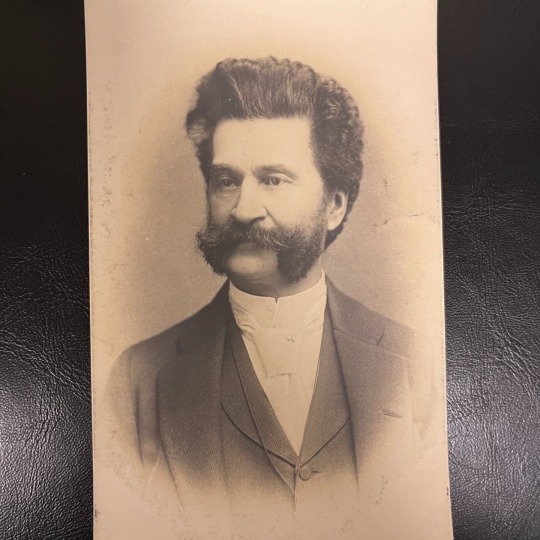

OTD in Music History: Composer and conductor Johann Strauss II (1825 – 1899) is born in Vienna.
Over the span of a long lifetime spent largely before the public, Strauss II – who led his own private dance orchestras and was also one of the most famous conductors of his day – composed over 500 original waltzes, polkas, and quadrilles, as well as several operettas (most notably “Die Fledermaus” in 1874) and a ballet.
Strauss II was known as "The Waltz King", and he was largely responsible for establishing the primacy of the waltz as the predominant popular dance form across Europe in the 19th Century.
Some of Strauss II’s most famous works in that vein include "The Blue Danube" (1866), "Tales from the Vienna Woods" (1868), and "Frühlingsstimmen" (“Spring’s Voice”) (1882), and the "Kaiser-Walzer" (“Emperor Waltz”) (1889).
Even though he almost exclusively wrote “light” music, Strauss II was widely admired by other prominent composers. Richard Wagner (1813 – 1883) once admitted that he liked the waltz "Wein, Weib und Gesang" (“Wine, Women and Song”), and, in the course of composing his famous waltz series from his opera “Rosenkavalier” (1911), Richard Strauss (1864 - 1949) – unrelated – remarked: "How could I forget the laughing genius of Vienna?"
The most touching anecdote in this regard comes down to us thanks to Johannes Brahms (1833 – 1897), however, who was a close personal friend of Strauss II. Strauss II’s, wife, Adele, once allegedly approached Brahms with a customary request that he autograph her fan. The usual practice at that time was for a composer to inscribe a few measures of his best-known music, and then sign his name. Brahms, however, inscribed a few measures from the "Blue Danube," and then wrote beneath it, "Unfortunately NOT by Johannes Brahms."
PICTURED: A c. 1900 real photo postcard, showing the middle-aged Strauss II at the height of his powers c. the 1870s.
#classical music#opera#music history#bel canto#composer#classical composer#aria#classical studies#maestro#chest voice#Johann Strauss II#Johann Strauss#Strauss#violin#violinist#The Waltz King#An der schönen blauen Donau#classical musician#classical musicians#classical voice#classical history#historian of music#history of music#musician#musicians#music education#music theory
9 notes
·
View notes
Text
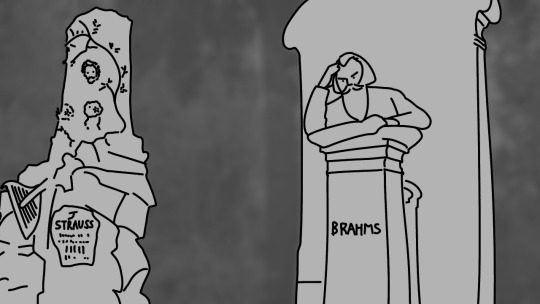
A drawing of Strauss II and Brahms' grave...wonder why I drew it back then
6 notes
·
View notes
Link
for any orchestral/classical music nerds out there that may wish to obtain busts of several famous composers (to include J. Strauss, Chopin, Brahms, Mendelssohn, Handel, Bellini), here’s your opportunity to do such.
Please note that two of the busts are of Brahms but are in different styles. Most if not all have minor damage or markings that should easily be able to be fixed/corrected. I know these were all acquired second hand at various thrift shops in the Central PA area over the years, but I do not actually know much about any of them individually or collectively other than who they are of (I'm more of a music nerd than a collect busts of people nerd). This collection belonged to my ex-fiance who died in 2019 and I kind of inherited all the weird nerd stuff from his house, but I am now needing to seriously downsize so I am selling off quite a few possessions including these.
I will separate the collection upon request.
#composers#orchestra#band#music#busts#Johann Strauss II#J. Strauss#Frederic Chopin#Chopin#Johannes Brahms#Brahms#Felix Mendelssohn#Mendelssohn#George Frideric Handel#G.F. Handel#Handel#Vincenzo Bellini#Bellini#music nerd#ebay#for sale
1 note
·
View note
Text
Mozart Concert Golden Hall Vienna Austria
Mozart Concert Golden Hall Vienna Austria
Mozart Orchestra Golden Hall Vienna – Classictic
Music at the Golden Hall Mozart concert was the best – the crowd and organization, not so much… I was disappointed at the disorganization and requiring people to check their coats for a fee before they were allowed to enter the hall and be seated. I think that should be optional, even so, most museums and art galleries check visitor belongings free…

View On WordPress
#András Deák Conductor Vienna Mozart Orchestra#Mozart A Little Night Music KV 525#Mozart Concerto for Oboe in C Major KV 314#Mozart Opera Don Giovani#Mozart Opera The Magic Flute#Mozart Opera The Marriage of Figaro#Mozart Orchester Musikverein Wien#Mozart Orchestra Golden Hall Vienna#Mozart Overture to The Drama Director KV 486#Mozart Papageno&039;s Aria#Mozart Rondo Turkish Style KV 331#Mozart Symphony No. 40 in G Minor KV 550#Sebastian Sima Oboe Soloist#Sokolin Asllani Baritone#The Blue Danube Waltz by Viennese composer Johann Strauss II#Wolfgang Amadeus Mozart#Yasmin Özkan Coloratura Soprano
0 notes
Text
Matching IkeVamp suitors with classical pieces that likes to invade my brain
Was browsing more classical music to listen to but then I remember I used to get bits of IkeVamp brainrot listening so this list has cometh to be.
Characters Listed: The Residents, William, Vlad and His Minions.
Author Note: why does the bad guys always get the banger ones when it comes to music istg... also did you know? I was about to put Dies Irae (Mozart) in Charles' list before i changed my mind but decided to give it to Vlad instead because i like the vibe (except I gave Vlad Verdi's Requiem of Dies Irae instead because apparently there is another piece titled Dies Irae).
Napoleon
Clair de Lune by Claude Debussy
Arabesque No. 1 by Claude Debussy
Toreador March/Les Toreador by Georges Bizet (specifically that part.)
Vlad
Prelude in C Sharp Minor by Rachmaninoff
Four Seasons, Winter by Antonio Vivaldi
Moonlight Sonata, 3rd Movement by Ludwig Van Beethoven
Lacrimosa by Wolfgang Amadeus Mozart (early composition) and Franz Xaver Süssmayr (finishes the rest of the piece)
(Mozart was unable to finish composing this piece because he passed away. So the person who commissioned this piece hired his student to finish it. Source: Google)
Fantaisie Impromptu by Frederic Chopin
Verdi's Requiem Dies Irae by Verdi
Arthur
Habanera from Carmen Suite by Georges Bizet
Por Una Cabeza Tango by Carlos Gardel
La Campanella by Liszt
Vincent
Peer Gynt, Morning Mood by Edvard Grieg
Four Seasons, Spring by Antonio Vivaldi
Nocturne Op 9 No. 2 by Frederic Chopin
Minuet in G Major by Christian Petzold (said to be attributed to Bach)
Theodorus
Tristesse by Frederic Chopin
Nocturne in C Sharp Minor (No. 20) by Frederic Chopin
Shakespeare
Nessun Dorma by Giacomo Puccini
The Swan/Le Cygne by Saint-Saens
Fur Elise by Ludwig Van Beethoven
Leonardo
Bouree in E Minor by Johann Sebastian Bach
Minuetto in G by Luigi Boccherini
Comte de Saint-Germain
Cello Suite No. 1 : Prelude in G by Johann S. Bach
The Nutcracker Suite, The Waltz of The Flowers by Tchaikovsky
Aquarium by Saint-Saens
Pomp and Circumstance March No. 1 by Edward Elgar
Jazz Suite No. 2: VII. Waltz No. 2 by Dmitri Shostakovich
Danse Macabre by Saint-Saens
Mozart
Symphony No. 10 in G Minor: I. Molto Allegro by Wolfgang Amadeus Mozart (basically his own piece)
Hungarian Dance No. 5 by Johannes Brahms
Charles-Henri
the Nutcracker Suite: Dance of the Sugar Plum Fairy by Tchaikovsky
Gymnopedie No. 1 by Erik Satie
Funeral March by Frederic Chopin
Faust
Toccata and Fugue in D Minor by Johann Sebastian Bach (i'm so sorry it just fits him)
O Fortuna : Carmina Burana by Carl Orff
Symphony No. 5 by Ludwig Van Beethoven
Jean
Moonlight Sonata, 1st Movement by Ludwig Van Beethoven
Airs a faire fuir by Erik Satie
Valse Triste by Jean Sibelius
Dazai
Blue Danube by Johann Strauss II
Sleeping Beauty Waltz by Tchaikovsky
Tales of Hoffman, Barcarolle by Offenbach
Isaac
Flight of The Bumblebee by Nikolai Rimsky-Korsakov
Cradle Song AKA Lullaby by Johannes Brahms
Air on the G String by Johann S. Bach
Sebastian
Rondo Alla Turca by Wolfgang Amadeus Mozart
Eine Kleine by Wolfgang Amadeus Mozart
Symphonies de Fanfares : Rondeau by Jean Joseph Mouret
#ikemen vampire#ikevamp#ikevamp arthur#ikevamp theodorus#ikevamp charles#ikevamp comte#ikevamp faust#ikevamp isaac#ikevamp napoleon#ikevamp shakespeare#ikevamp vincent#ikevamp leonardo#ikevamp mozart#ikevamp sebastian
51 notes
·
View notes
Text
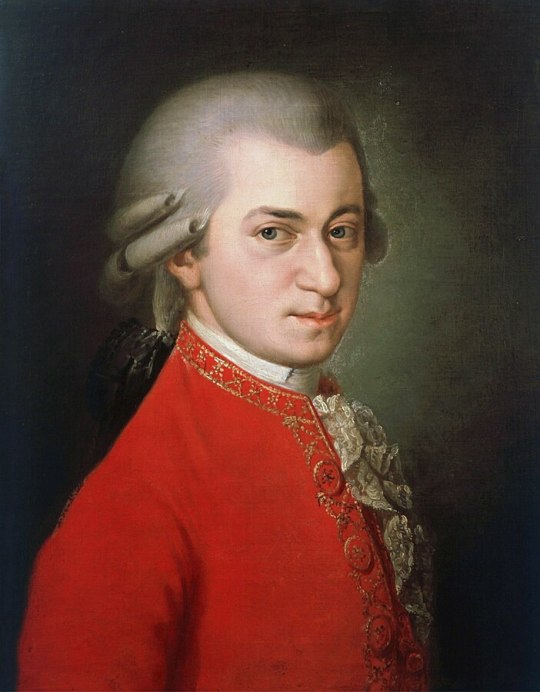

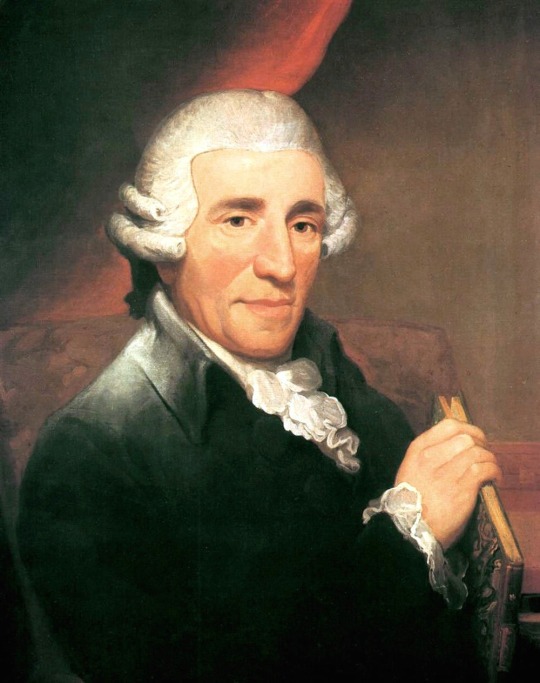
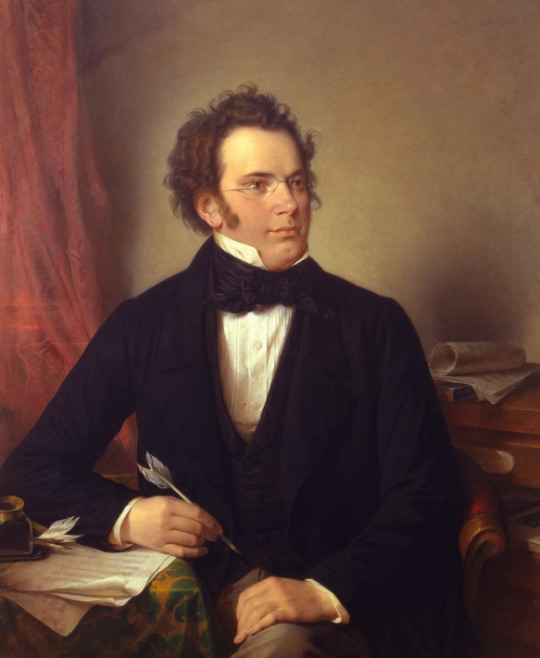
For reference, here is a bit of each:
Mozart:
Haydn:
Strauss the Elder:
Schubert:
#best habsburg bracket#bonus rounds#this should tide us over for the end of round 1#and the start of round two#cry havoc and loose the hounds of classical music discourse
39 notes
·
View notes
Text
Le Beau Danube Bleu Tiara by Karl Lagerfeld & Swarovski
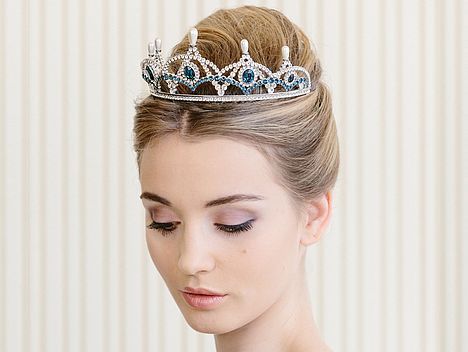
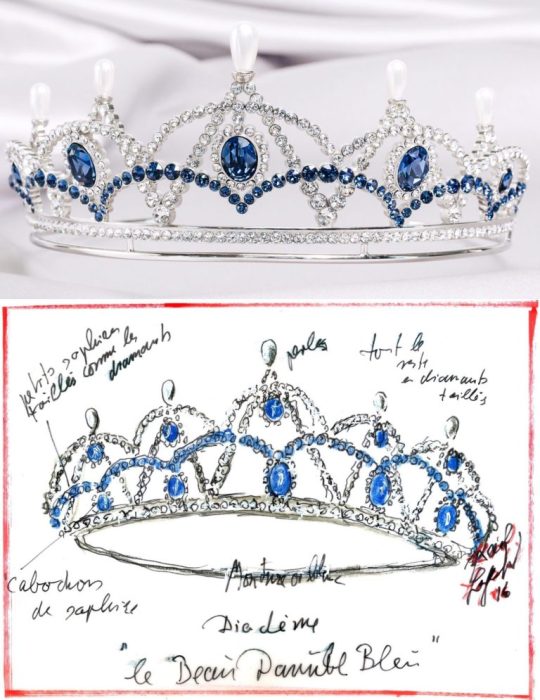
Since the 1950's Swarovski has worked with an international designer to create an iconic tiara to be worn at the Vienna Opera Ball. In 2017 they paired with fashion icon Karl Lagerfeld to design a diadem in honor of the 150th anniversary of the "The Blue Danube" waltz by Austrian composer Johann Strauss II. The beloved waltz is now considered the unofficial national anthem of Austria and is renowned worldwide.
The tiara has "a mix of classic and modern influences, meticulously crafted from a mix of 394 Swarovski crystals in clear and sapphire hues, and finished with five Swarovski crystal pearls, the tiara is elegant and timeless, with a distinctive essence that is uniquely Karl Lagerfeld." (1)(2)
#swarovski#karl lagerfeld#vienna opera ball#tiara#tiaras#diadem#diadems#hair piece#hairpiece#headpiece#head piece#head ornament#headornament#hair ornament#hairornament#crystal#tiara crown#tiaras crowns#tiarascrowns#tiaracrown
44 notes
·
View notes
Photo

Johann Strauss II
Johann Strauss II (1825-1899), aka Strauss the Younger, was an Austrian composer best known for his waltzes such as The Blue Danube. Famed throughout Europe and the United States in his own lifetime, Strauss was known as the 'Waltz King', but he also wrote many polkas, marches, quadrilles, and operettas such as Die Fledermaus and Der Zigeunerbaron.
Continue reading...
59 notes
·
View notes
Text
Birthdays 3.14
Beer Birthdays
Anthony J. McGowan (1869)
Brad Kraus
Five Favorite Birthdays
Michael Caine; actor (1933)
Billy Crystal; actor, comedian (1947)
Albert Einstein; physicist (1879)
Meagan Follows; actor (1968)
Casey Jones; railroad engineer (1864)
Famous Birthdays
Eva Angelina; porn actor (1985)
Diane Arbus; photographer (1923)
Les Baxter; singer, bandleader (1922)
Frank Borman; astronaut (1928)
Les Brown; bandleader (1912)
Eugene "Gene" Cernan; astronaut (1934)
Pierre-Louis Couperin; composer (1755)
Hannah Cowley; writer (1743)
Rick Dees; radio D.J. (1951)
Paul Ehrlich; bacteriologist (1854)
Victor Emmanuel II; 1st king of Italy (1820)
Horton Foote; playwright, screenwriter (1916)
Adolph Gottlieb; artist (1903)
Sasha Grey; porn actor (1988)
Jerry Greenfield; co-founder of Ben & Jerry's Ice Cream (1951)
Quincy Jones; record producer (1933)
Hank Ketchum; cartoonist (1920)
Laura Leighton; actor (1969)
Brianna Love; porn actor (1985)
Thomas Malory; writer (c. 1405; date of death, 1471)
Isadore Gilbert Mudge; librarian (1875)
Peter Musschenbroek; Dutch physicist (1692)
Arthur O'Shaughnessy; British poet (1844)
Walter Parazaider; rock woodwinds, "Chicago" (1945)
Kirby Puckett; Minnesota Twins CF (1960)
Meredith Salenger; actor (1970)
Giovanni Schiaparelli; astronomer (1835)
Shirley Scott; jazz/blues organist (1934)
Max Shulman; writer (1919)
Johann Strauss; composer (1804)
Georg Telemann; composer (1681)
Edward Tufte; designer (1942)
Rita Tushingham; actor (1942)
Jerry Jeff Walker; country singer (1942)
Tad Williams; writer (1957)
Kevin Williamson; screenwriter (1965)
Adrian Zmed; actor (1954)
2 notes
·
View notes
Photo
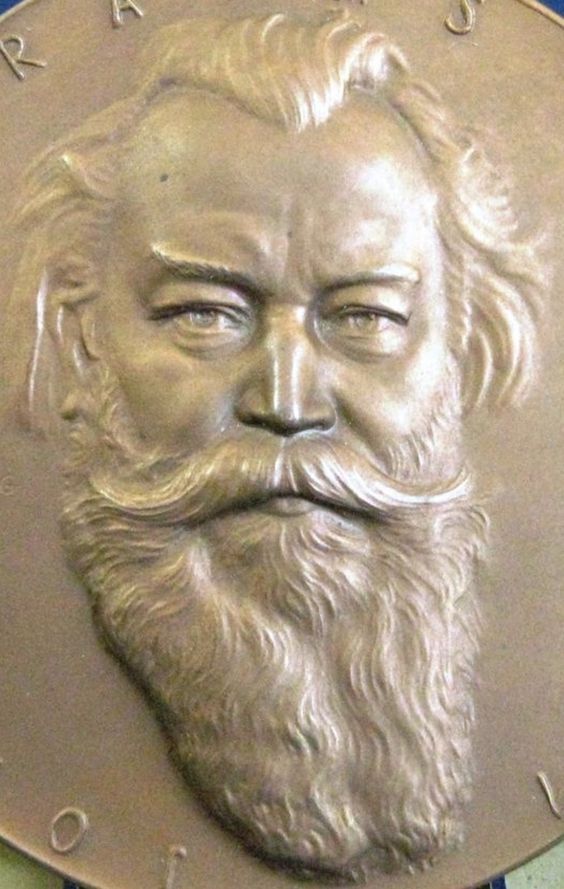

One of seven bronze medallions created in 1900 by Arnold Hartig (1878 - 1972) who was a Czech sculptor and medalist who worked six decades in Vienna. This medal featured Johannes Brahms (1833-97). All of them feature composers, starting with J.S. Bach (1685-1750), Haydn (1732-1809), Johannes Mozart (1756-91), Ludwig van Beethoven (1770-1827), Franz Schubert (1797-1828), and last but not least Johan Strauss II (1825-99). To see them all, in spite of their lack of beards, left click here.
5 notes
·
View notes
Text
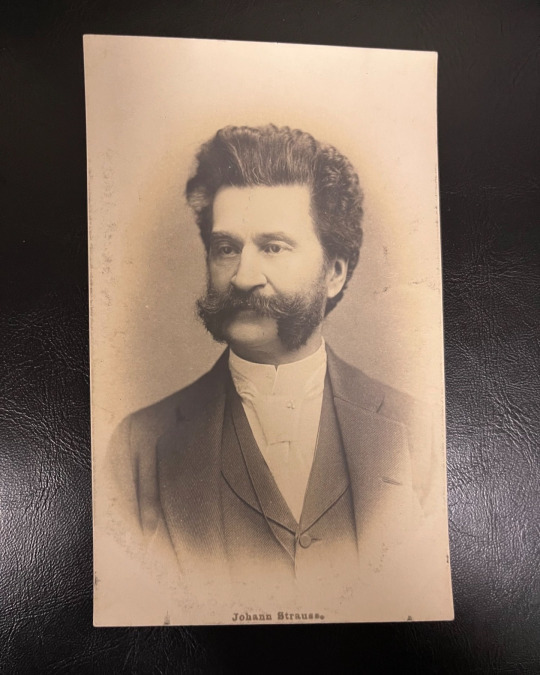
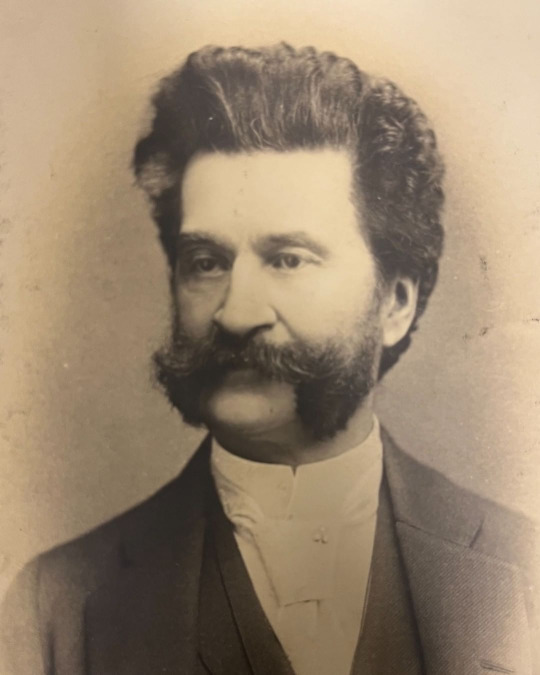
OTD in Music History: Composer and conductor Johann Strauss II (1825 – 1899) is born in Vienna.
Over the span of a long lifetime spent largely before the public, Strauss II – who led his own private dance orchestras and was also one of the most famous conductors of his day – composed over 500 original waltzes, polkas, and quadrilles, as well as several operettas (most notably “Die Fledermaus” in 1874) and a ballet.
In his lifetime, Strauss II was known as "The Waltz King", and he was largely responsible for establishing the primacy of the waltz as the predominant popular dance form across Europe in the 19th Century. Some of Strauss II’s most famous works in that vein include "The Blue Danube" (1866), "Tales from the Vienna Woods" (1868), and "Frühlingsstimmen" (“Spring’s Voice”) (1882), and the "Kaiser-Walzer" (“Emperor Waltz”) (1889).
Even though he almost exclusively wrote “light” music, Strauss II was widely admired by other prominent composers. Richarrd Wagner (1813 – 1883) once admitted that he liked the waltz "Wein, Weib und Gesang" (“Wine, Women and Song”), and, in the course of composing his famous waltz series from his opera “Rosenkavalier” (1911), Richard Strauss (1864 - 1949) – unrelated – remarked about Strauss II: "How could I forget the laughing genius of Vienna?"
The most touching anecdote in this regard comes down to us thanks to Johannes Brahms (1833 – 1897), however, who was also a close personal friend of Strauss II. Strauss II’s, wife, Adele, once allegedly approached Brahms with a customary request that he autograph her fan. The usual practice at the time was for a composer to inscribe a few measures of his best-known music, and then sign his name; Brahms, however, inscribed a few measures from the "Blue Danube", and then wrote beneath it, "Unfortunately, NOT by Johannes Brahms."
PICTURED: A c. 1900 real photo postcard, showing the middle-aged Strauss II at the height of his powers c. the 1870s.
#Johann Strauss II#composer#operetta#waltz#An der schönen blauen Donau#orchestra#symphony#music#music history#classical music#Strauss#Blue Danube#choir#chorus#violin#piano#cello
11 notes
·
View notes
Text
Day #7- Kaylee
The seventh day started with a not so polite alarm blaring down the hallway at 6:30 am that I'm pretty sure everyone heard. It was an early start to the day as we had planned to head to the city of Budapest in Hungary this morning, a long two and a half hour bus ride in a fancy bus awaited us. This was to say, we needed to survive the tipsy bathroom located on the bus before we reached our destination. A task only obtained with our sea legs acquired from riding the subway in Vienna. Let's go public transportation! Whoop Whoop!

Next we had to occupy ourselves on our journey to Budapest. Some people studied while others studied the back of their eyelids. Both I think to be valid responses to unwarranted time with nowhere to go. The best, in my opinion, had to be the view outside our windows as we drove. It was like a look back at home with fields flowering and countryside flowing over the distance. Not going to lie, it made me miss home a little.

Once we arrived in Budapest, we loaded into taxi's and skedadel over to our hotel. We headed over to the ATM across the street to nab some forint, the currency in Hungary, and ended up struggling way more than we should have to figure out the machine. We dropped off our bags and headed out for a light lunch. I wasn't overly hungry so a few of us worked our way over to Starbucks for a drink and dessert while we discussed the Opera we were going to watch tonight and what to expect. I have never been to an Opera before so this description made me very interested. A tragedy based on Shakespeare, Greek Mythology, and compositions by Strauss? Count me in!
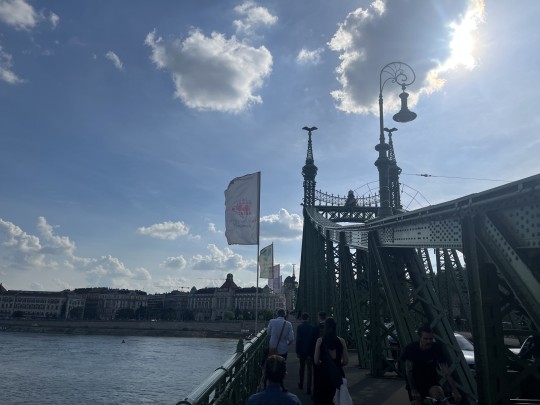
We then gathered together to finish our composer presentations. I actually got to present today which was both terrifying and fun at the same time. I learned more and got to show everyone more about my composer, Johann Strauss II. We also learned about other composers such as Bruckner, who by the way is really weird. Like obsessed with dead people, weird, which is not an over-exaggeration by the way.

We then headed over in our fancy dress wear to the Hungarian State Opera, where we went to watch an Opera called Elektra. The hall was absolutely stunning, where pillars were painted gold and red drapes flowed effortlessly. The performance was about a grief stricken princess who wanted to convince her siblings to kill her mother as well as her mothers lover; because the two killed the father. Not complicated at all. It was absolutely exhilarating. The best thing since sliced bread. The plot twists were great as well. It kept everyone, even Dr. Carpender, jumping out of their seats in excitement!
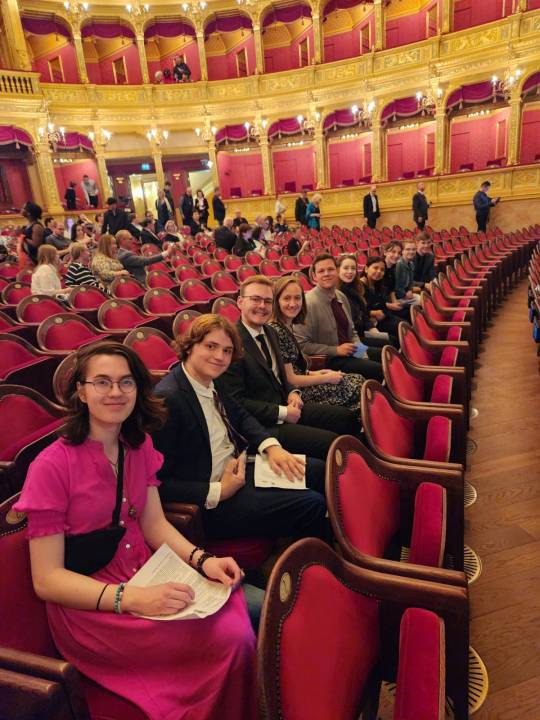
Overall, today was productive. Giving us a side view on culture in Hungary while continuing to analyze the city of Vienna. The outside look at this side of the border made Vienna that much more interesting. Giving us the tools to cross observe the two and to understand where they overlap. Both cities brim with independence and cultural interdependencies while both staying true to their beliefs. This comparison is important because they are so close to each other while still seeming like they are years apart.

2 notes
·
View notes
Text
Masters of Melody: A Journey Through the Lives and Legacies of Famous Composers
Introduction:
Music has been a timeless expression of human emotions and creativity, and behind many of the world's most enchanting compositions are the brilliant minds of famous composers. These maestros have left an indelible mark on the world of music, shaping its evolution across centuries and genres. In this article, we will embark on a journey through the lives and legacies of some of the most renowned composers in history.
Ludwig van Beethoven (1770-1827):
One of the greatest and most influential composers of the Classical and Romantic eras, Ludwig van Beethoven's music transcends time. Despite facing personal challenges such as hearing loss, Beethoven composed some of the most iconic works, including the Ninth Symphony and "Moonlight Sonata." His innovative use of form and emotion paved the way for the Romantic movement in music.
Wolfgang Amadeus Mozart (1756-1791):
A child prodigy who began composing at the tender age of five, Mozart is synonymous with musical genius. His prolific output includes over 600 works, ranging from operas and symphonies to chamber music and piano sonatas. Mozart's timeless compositions, such as "Eine kleine Nachtmusik" and "The Magic Flute," showcase his unparalleled gift for melody and harmony.
Johann Sebastian Bach (1685-1750):
A cornerstone of Baroque music, Johann Sebastian Bach's intricate compositions are a testament to his technical brilliance. Known for his mastery of counterpoint and polyphony, Bach's works, such as the "Brandenburg Concertos" and the "Mass in B Minor," are considered masterpieces that laid the foundation for Western classical music.
Pyotr Ilyich Tchaikovsky (1840-1893):
Tchaikovsky's emotionally charged and expressive compositions have made him a staple in the world of Romantic music. Famous for his ballets, including "Swan Lake," "The Nutcracker," and "Sleeping Beauty," Tchaikovsky's ability to convey deep emotions through orchestration has left an enduring impact on the world of classical music.
Johann Strauss II (1825-1899):
Known as the "Waltz King," Johann Strauss II popularized the waltz and operetta in 19th-century Vienna. His infectious melodies, as heard in compositions like "The Blue Danube" and "Die Fledermaus," continue to be celebrated at traditional balls and concerts. Strauss's influence extends beyond his time, as his waltzes remain a staple in classical repertoire.
Conclusion:
The world of classical music owes much of its richness and diversity to the brilliance of famous composers who dared to push the boundaries of creativity. From the intellectual complexities of Bach to the emotional depth of Beethoven, each composer has left an indelible mark on the musical landscape. Their timeless works continue to resonate with audiences worldwide, reminding us of the enduring power of music to evoke emotion, inspire, and connect us across generations.
1 note
·
View note
Text
Fragments foster mosaics, in memoire..
Creative sparks ignite like a thrilling blood rush whenever I indulge myself on something artistically inclined. Literatures, novellas, playwrights, fashions, and paintings — to name a few.
Expect yourself to stumble upon: carefully curated visual archives, both classical and modern arrangements, cinephile ramblings, et alia.
ARTISTS: (R&B and classical genre leaning) maisie peters, jeff bernat, laufey, mistki, novo amor, lizzy mcalpine, taylor swifts, stephen sanchez, noah kahan, chase atlantic, tate mcrae, sabrina carpenter, conan gray, beabadoobee, ariana grande


COMPOSERS: tchaikosvky, johann johannsson, bach, johann strauss ii, camille saint saëns schumann, debussy, beethoven.
LITERATURE: dan brown (the da vinci code; angel and demon; inferno) / fyodor dostoevsky (the idiot; crime and punishment) / jane austen (emma) / jane eyre (little women; brontë sisters, northanger abbey) / arthur conan doyle (sherlock holmes series) / agatha christie (hercule poirot series) / charles baudelaire (les fleurs du mal).



MOVIES: christopher nolans (interstellar / oppenheimer / the dark knight / inception), dead poets society, the sound of music, nanny mcphee, sherlock holmes, hercule poirot, robert langdon, pretty woman, dcu, mcu.
SERIES: (fantasy leaning) lockwood & co, the sandman, my life with the walter boys, the witcher, anne with an e, wednesday, shadow and bone, national treasure: edge of history, the wheel of time.
OTHERS: 2000s animes ( little princess sara / petite princess yucie / yumeiro patissiere / ufo baby ), miraculous ladybug, pretty rhythm series, sofia the first, shoujo light novels, isekai animes.
0 notes
Text
For World Opera Day: A Look at "Carmen" in Pop Culture
October 25 is World Opera Day, and not coincidentally the birthday of both Georges Bizet and Johann Strauss II. The bicentennial of the birth of the latter composer is in just a couple of years, so we’ll save a post on him for then. But we have had many occasions to mention Bizet’s most famous opera Carmen here on Travalanche, for it is one of the most popular operatic works in the world, so…

View On WordPress
1 note
·
View note
Text
Classical music is a timeless art form that has been enjoyed for centuries. It has inspired generations of musicians and music lovers alike, with its complex arrangements and sophisticated melodies. Over the years, there have been many classical music pieces that have stood the test of time and continue to be celebrated to this day. Here are the top 10 most famous classical music pieces of all time.
1. Beethoven's Symphony No. 9: This masterpiece by Ludwig van Beethoven is considered one of the greatest works of classical music ever written. Known as the "Choral Symphony," it features a stirring finale that includes a full choir.
2. Bach's Brandenburg Concertos: These six concertos were written by Johann Sebastian Bach and are considered some of his greatest works. Each concerto features a unique combination of instruments and showcases Bach's incredible skill as a composer.
3. Mozart's Symphony No. 40: This symphony by Wolfgang Amadeus Mozart is one of his most famous works. It is known for its fast-paced melodies and intense emotional content.
4. Tchaikovsky's Symphony No. 5: This symphony by Pyotr Ilyich Tchaikovsky is one of his most popular works. It is known for its powerful melodies and complex arrangements.
5. Chopin's Nocturnes: These melancholic piano pieces by Frédéric Chopin are some of his most beloved works. They are known for their haunting melodies and emotional depth.
6. Vivaldi's Four Seasons: This cycle of four violin concertos by Antonio Vivaldi is one of the most famous works in the Classical repertoire. Each concerto depicts a different season and is known for its vivid musical imagery.
7. Handel's Messiah: This oratorio by George Frideric Handel is one of the most famous works in the baroque canon. It features the famous "Hallelujah" chorus and is often performed during the Christmas season.
8. Schubert's Symphony No. 8: This symphony by Franz Schubert is one of the most famous in the Romantic era. It is also known as the "Unfinished Symphony" because Schubert only completed two of its four movements.
9. Ravel's Bolero: This orchestral piece by Maurice Ravel is one of the most recognized classical music pieces of all time. It features a repetitive melody that builds in intensity over time.
10. Strauss' The Blue Danube: This waltz by Johann Strauss II is one of the most famous classical music pieces ever written. It is often associated with Vienna and the elegant ballroom dances of the past.
In conclusion, these 10 classical music pieces are among the most famous and beloved of all time. They showcase the incredible skill and creativity of the composers who wrote them and continue to inspire new generations of musicians and music lovers.
The Top 10 Most Famous Classical Music Pieces of All Time
0 notes